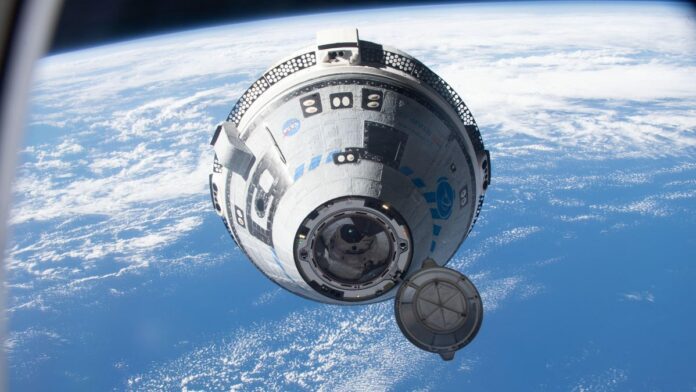The Starliner spacecraft is finally ready for launch, targeting a liftoff date in May. It’s been a struggle to get to this point for Boeing’s crew vehicle, which suffered from a series of unfortunate delays over the years, the last of which had to do with two major safety hazards discovered on the spacecraft.
Boeing’s CST-100 Starliner is set to carry NASA astronauts Sunita Williams and Barry “Butch” Wilmore to the International Space Station (ISS) no earlier than the first day of May. During a press briefing on Friday, representatives from the company reaffirmed their confidence in Starliner’s parachutes and protective tape, which had caused the last of several delays of the spacecraft’s launch.
Starliner was originally supposed to launch the crew on July 21, 2023. A few weeks before liftoff, however, the company announced that it was standing down from the launch attempt to address newfound issues with the crew vehicle.
The first safety concern had to do with the load capacity of Starliner’s three parachutes, which are designed to safely land the crew vehicle. The failure load limit of the fabric sections on the parachutes was found to be lower than expected, meaning that if one parachute failed, the remaining two would not be able to slow down the Starliner vehicle on its way down to land in New Mexico.
The second concern involved hundreds of feet of protective tape used to cover the wiring harnesses inside the Starliner vehicle, which was discovered to be flammable. “We went through the vehicle and we either removed or we put barriers in place or we found that the area that had the tape wasn’t susceptible to this issue,” Mark Nappi, vice president and program manager of Boeing’s Commercial Crew Program, said during Friday’s press briefing. “We’ve removed nearly a mile of tape from the vehicle, and mitigated about 85 to 90 percent of the areas that the tape is installed on the vehicle.”
The company also developed a new parachute system that meets NASA’s standards of safety. “We’ve closed all that [paperwork], and we’re ready to go fly,” Nappi said.
The upcoming flight marks Boeing’s first crewed trip to the ISS. It’s also the first Starliner launch since an uncrewed test flight of the vehicle suffered an anomaly in May 2022, when a thruster used for orbital maneuvering unexpectedly failed. During Starliner’s inaugural uncrewed test in 2019, the spacecraft failed to dock with the ISS, leading to further tests and troubleshooting.
It’s been a journey for Boeing, to put it very mildly. The company is under a $4.3 billion contract with NASA’s Commercial Crew Program to transport astronauts and cargo back and forth to the ISS. NASA’s other commercial partner, SpaceX, just landed its seventh crew on Earth after spending 199 days in space, marking another successful roundtrip to the ISS while its industry rival, Boeing, remains at zero.
“It’s always tough to fly into space,” Steve Stich, program manager for NASA’s Commercial Crew Program, said on Friday. “There’s always challenges with every launch vehicle and spacecraft and so for us having that second transportation system is hugely important to us.”
NASA has been mainly relying on SpaceX to transport astronauts to the ISS. Before the company developed its Dragon crew vehicle, however, the space agency had its astronauts primarily riding on board Russia’s Soyuz crew ship. NASA, facing escalating tensions with Roscosmos over rising Soyuz seat costs, and wanting autonomy in this realm, began seeking commercial alternatives for launches from U.S. soil.
NASA will still occasionally purchase a seat from Russia, but it would much rather work with its commercial partners. Russia recently aborted the launch of three astronauts, including NASA astronaut Tracy Dyson, about 20 seconds before liftoff due to a voltage drop in a power source.
Should Boeing’s Starliner finally make it to the ISS with a crew on board, NASA can begin relying on both of its commercial partners for these orbital trips.
A version of this article originally appeared on Gizmodo.


